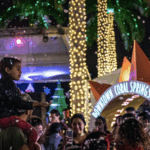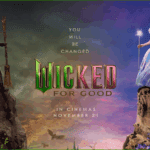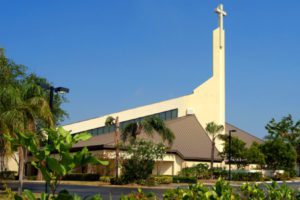By: Sharon Aron Baron
Seven minutes and nine seconds was all the time it took for an active shooter to take 17 lives at the Marjory Stoneman Douglas high school in Parkland. The massacre on Feb. 14, 2018 would go down as the second deadliest mass school shooting in the United States.
After spending one year covering the aftermath of the massacre, Emmy award-winning producer Linda Corley with Daydream Productions in association with South Florida PBS, presents the one-hour documentary: “After Parkland, The Healing of a Community and a Nation“, to a national public television audience.

Filmmakers Linda Corley who lived in Parkland for over 20 years and Joel Kaplan.
The massacre struck home for Corley because Parkland was her home for over 20 years. Now living in Deerfield Beach, her children attended Riverglades Elementary, Westglades Middle and Marjory Stoneman Douglas High School.
At the time they began filming – right after the shooting, they decided to do it from an angle of healing.
“I really wanted to shine light on the unsung heroes and show what a resilient town Parkland is,” said Corley.
Although the documentary takes viewers behind the scenes as the students of Marjory Stoneman Douglas deliver their message during a national tour around the country, its primary focus are the Parkland parents, teachers, families of survivors and of course, Marjory Stoneman Douglas students from both Coral Springs and Parkland.
They follow students as they spend their summer on a 25-city bus tour from Ferguson to Chicago and then there are the stories of several Parkland individuals, whose stories of healing others are documented over the course of a year, beginning with the massacre.
“After Parkland” watches as Andrea, sister of victim Joaquin Oliver dedicates her time and efforts to a charity project in her brother’s name. With the help of her artist/activist father Manuel, she plans the beautification of a basketball court located at Bethune Elementary in Hollywood. Parkland mother and portrait painter Nava Lundy feverishly paints the portraits of the 17 killed and lovingly delivers them to the bereaved families for comfort.
Finally, Grammy Award winner Melissa Manchester dedicates an anthem to the students of Douglas, and with the help of teacher Stewart Rabin, they bring survivors together to sing the song “We are the Fire”.
The documentary culminates in a crescendo as the Douglas choir gathers for an emotional public concert a week before the one year anniversary of the shooting. Their powerful performance proves the resilience of strong young students who are determined to show the world their tenacity to survive.
Corley said that a producer coming in from California or New York wouldn’t understand the community like someone who had lived and spent so much time of their life there.
After covering Parkland for one year after the massacre and getting to know so many in the community, she saw first-hand the post-traumatic growth in the city. Post-traumatic growth is a positive psychological change experienced as a result of adversity and other challenges in order to rise to a higher level of functioning.
“You take a tragedy and grow from it,” said Corley. “Parkland is an example of post-traumatic growth. In every tragedy, some will recover from it, some never will, and some will have post-traumatic growth. In Parkland, there’s so much activism, healing and kindness.”
Corley said the documentary was a love story to her former home to show it was always a great town.
“Arguably it’s a greater town from the people that came from it.”
“After Parkland, The Healing of a Community and a Nation” airs on WPBT on March 28 on WXEL at 9 p.m. (Blue Steam subscribers channel 16) It will head to film festivals this summer and will be released nationally in the fall.
Author Profile

Related
 EventsNovember 24, 2025Coral Springs to Sparkle with Monthlong Holiday Spectacular in December
EventsNovember 24, 2025Coral Springs to Sparkle with Monthlong Holiday Spectacular in December NewsNovember 23, 2025Chamber Highlights Economic Outlook at Annual Forecast and Business Expo
NewsNovember 23, 2025Chamber Highlights Economic Outlook at Annual Forecast and Business Expo EventsNovember 23, 2025Simmons, Polsky Launch Free Winter Movie Series for Coral Springs Residents
EventsNovember 23, 2025Simmons, Polsky Launch Free Winter Movie Series for Coral Springs Residents EventsNovember 21, 2025St. Andrew Church Invites Community to Annual Thanksgiving Dinner
EventsNovember 21, 2025St. Andrew Church Invites Community to Annual Thanksgiving Dinner







